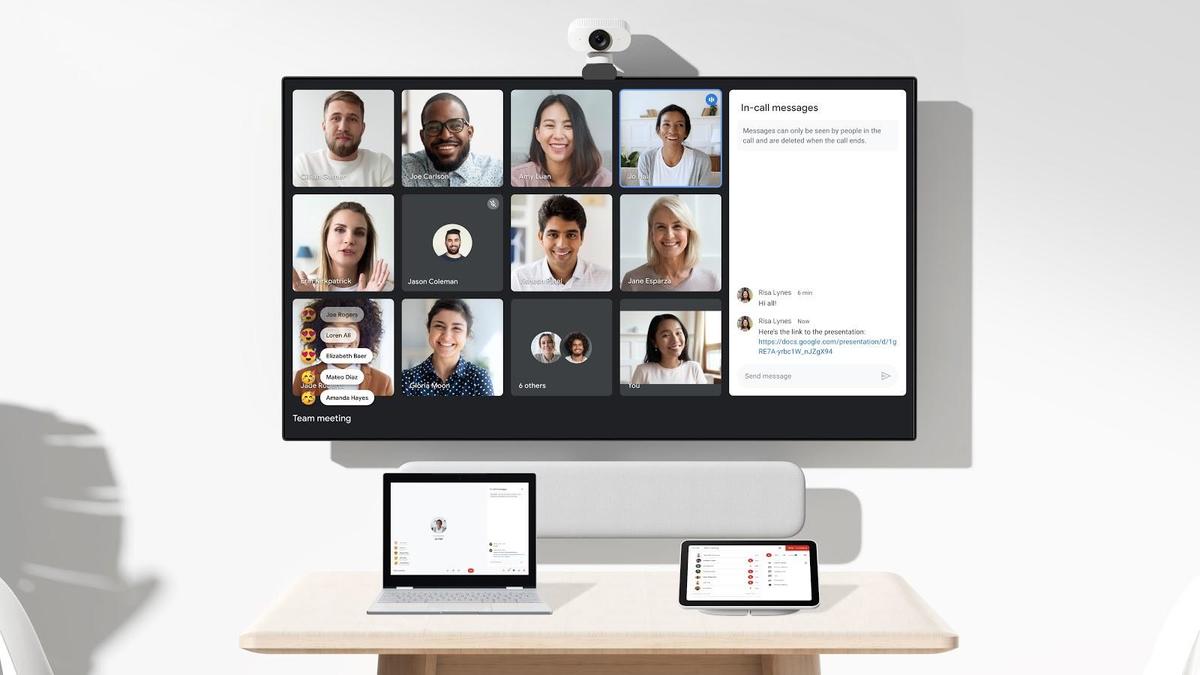A few months after rebranding G Suite as Workspace, Google is introducing a version of the productivity portfolio aimed at frontline workers. Google is also adding a series of new features to Workspace aimed at workers splitting time between home and the office.
The new Google Workspace Frontline will launch in the coming weeks. It will include communication and collaboration apps like Gmail, Chat, Docs and Drive, as well as business-grade support and security features like advanced endpoint management. Additionally, Google has made it easier to build custom AppSheet apps directly from Google Sheets and Drive, with an eye toward frontline worker use cases like reporting safety risks or managing customer requests.
The aim is to “open up communication and collaboration channels between frontline workers and corporate teams in a way that’s safe and secure,” Javier Soltero, VP and GM of Google Workspace, wrote in a blog post. “By closing the gap between the frontline and the corporate team, we’re giving frontline workers secure access, on any device, to the information they need to be at their best.”
Workspace Frontline will compete directly with Facebook Workplace’s features for frontline workers, which were rolled out in 2019. As of last May, Facebook Workplace had 5 million paid users, with adoption accelerated due to the remote work trends driven by the pandemic.
At the time of G Suite’s rebranding, the productivity suite had more than six million business customers. Of course, Facebook isn’t its only competitor in the collaboration and communication space: Applications like Slack are stealing some of the thunder from email. Microsoft Teams is combined with Microsoft Office 365 to be a powerhouse. And companies like Zoom can leverage video conferencing into more collaboration applications.

Google Workspace’s new capabilities include second-screen experiences.
To keep up in the competitive field, Google is adding a series of new features designed for the new “work from anywhere” model of productivity, which seems here to stay even once the pandemic subsides.
Soltero wrote that Google is “especially interested in what we call collaboration equity, or the ability to contribute equally, regardless of whether you’re sitting in the same room as your colleagues or hemispheres apart.”
The new features include:
- Segmentable working hours, which will help users specify multiple work blocks in working hour settings to signal to teammates when they’re online and available for meetings.
- Recurring out-of-office events, which will help users schedule regular, recurring out-of-office blocks.
- Location indicators across Google Workspace, allowing users to share which days they will be working from home and which days they will be in the office.
- Focus time, to help people minimize distractions by limiting notifications.
- Time insights (visible to the employee only, not their manager), giving employees insight into how they’re spending their time against their own priorities.
- Google Workspace with Google Assistant, allowing users to use their voice to ask Google what’s next on their calendar, quickly join a meeting or send a message.
- Second-screen experiences in Google Meet, allowing users to host meetings across a mix of devices, like Google Meet hardware in conference rooms or Nest Hub Max at home.
- Livestream enhancements, including Q&A, polls, and live captions
- New security tools with Assured Controls, which will allow customers to make decisions about how to control provider access.
- Expanded Data Regions coverage will help customers choose where their data is geographically located at rest.
